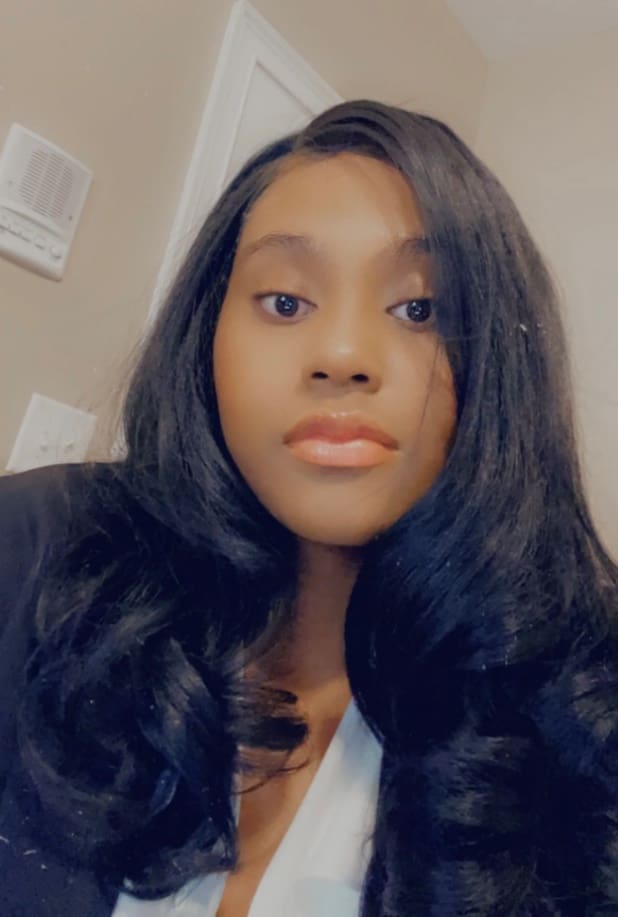By Hannah Watson
When 13-year-old Tanasia Kenney sat in front of a TV screen in 2006, she did not want to watch the images that blared before her. Kenney was enduring a “punishment” as the evening news unfolded inside her Georgia home. Specifically, she was enduring the punishment of watching news broadcasts, which her mother established when she “outgrew spankings.”
“I wasn’t a bad child, but I was a ‘my way or the highway’ type of child,” Kenney recalled. “After a while, I guess my mom felt like the spankings weren’t effective anymore. She was trying to make me watch the news as a deterrent [to bad behavior.] So, she was like, ‘You’re going to sit down and watch this and hopefully, you don’t see yourself on the news 10 years from now.’”
Despite Kenney’s mother repeatedly attempting to enforce punishment, Kenney did end up in the news 17 years later. At approximately 8 a.m. on a cloudless Monday, Kenney logs into her computer to review Georgia and Mississippi news events and press releases from major companies such as McDonalds. She is in search of a newsworthy story that will meet her editor’s approval before she clicks the publish button on her computer screen—just as she has done almost every day over the past eight years.
After her preteen punishment of watching news broadcasts evolved into a love for telling stories, Kenney became a national real-time reporter at McClatchy, a major U.S. newspaper publishing chain. However, unbeknownst to the Kennesaw State University alumna, her career would evolve with difficulties, adjustments, and countless revelations about journalism and public service.
A Typical Day
Kenney, now 31, boasts a wide smile and contagious laugh and has covered a manifold of news topics. With a beat that stretches across the U.S. Southeast and a retail and consumer news sub-beat, her stories range from changes in Taco Bell’s breakfast menu to failed murder-for-hire plots. In working inside a real-time newsroom, Kenney said that she never truly knows what specific story topic will dominate her workday.
“Anything to do with food, retail, consumer issues or pocketbook issues, I’ll go out searching for that news first,” Kenney said. “If I don’t find anything there, I’ll go local and see what’s happening here in Atlanta or Mississippi. However, breaking news can happen at any time and once I’m on it, I’m usually on it for the rest of the day or whenever those updates stop.”
During a typical workday, Kenney produces over three to four articles despite the McClatchy newsroom remaining remote since the isolation period of the Covid-19 pandemic. With an even tone and a sparkle in her brown eyes, Kenney does not boast about her involvement inside McClatchy.
Mike Garbett, Kenney’s real-time editor at McClatchy, however, painted an even clearer portrait of the McClatchy newsroom and Kenney’s involvement within it.
“It’s a unique situation,” Garbett said. “I’m in Florida, there’s two reporters in Atlanta…we have [McClatchy Real-Time Team Members] in California, Texas, New York and Massachusetts. Tanasia isn’t able to sit in a newsroom with other reporters and editors to slide a chair over to and say, ‘Hey, can you help me with this?’ Through it all, she’s very clean with her writing. There are people out there who are good reporters and some who are good writers. She is both. That’s not always the case.”
While describing Kenney as an “ambitious” journalist who can “effectively write about various topics,” Garbett also said that Kenney has written many articles that have garnered a multitude of online attention.
“Tanasia’s story about three siblings being killed in a murder-suicide while their mother was in a hospital was really well done,” Garbett said. “She handled it with the proper tone and it got almost 500,000 page views.”
No Perfection
Kenney’s accomplishments might suggest that her work is effortless. Nevertheless, Kenney said that the breaking news industry presents several challenges. In fact, she revealed that the speed breaking news reporting requires is often intimidating and difficult.
“Speed is always something that I have struggled with mainly because I’m a perfectionist,” Kenney said. “You can’t be perfect, especially in breaking news situations. In news, the game is whoever gets [breaking news published] first wins, but you also don’t want to make a factual error. In my mind, I’m trying to be careful and make sure everything flows well. Yet, in breaking news situations, readability is not always the top priority. It’s just, ‘Get this story up as fast as possible.’”
Kenney also said that the amount of time and attention required to cover the updates breaking news can be grueling.
“It can consume your entire day if you have a story developing from 9 a.m. to 4 p.m.,” Kenney said. “That’s common with a mass shooting, when someone’s on the run, or if a celebrity death occurs. As we [the McClatchy Real-Time Team] get more information, it’s kind of a back-and-forth between myself and my editors. I don’t think I’ve ever heard anyone say, ‘Breaking news came easy.’ It’s not. It’s a lot to think about.”
An Opportunity to Serve
Despite the difficulties that breaking news presents, Kenney views her broad beat and the spontaneous nature of breaking news as an opportunity to positively impact others. Without hesitation, she defined journalism as a “public service that people need to make informed decisions about themselves and their families;” a lesson she said she acquired during her undergraduate journalism education from KSU. Kenney, who was one of the first journalists to write a story on the Covid-19 pandemic, recalled several of her articles that assisted the public in better understanding the disease.
“During the height of the Covid-19 pandemic, we [the McClatchy Real-Time Team] were doing a lot of Covid coverage. I did one on the symptoms of Covid, but my angle was, ‘Yes, you can still get Covid after you’ve been vaccinated.’ It was just a basic story, but at that time people thought, ‘Once I get the vaccine, I’m [indefinitely] protected.’ I also wrote an explainer [article] on why African Americans should participate in vaccine trials despite hesitancy due to the history of racism in the medical community.”
While Kenney’s Covid-19 pandemic coverage has answered pressing questions, it also has birthed “heartwarming stories.” When Louisiana residents decided to turn their homes into Mardi Gras parade floats during the isolation period of the pandemic, Kenney produced an article set with a photo gallery. Days later, she received an email from Laura Numeroff, the children’s book author of “If You Give a Mouse a Cookie.”
“She [Laura Numeroff] emailed me,” Kenney said. “One of the homes in the photo gallery had character cutouts from the [“If You Give a Mouse a Cookie”] book. She ended up sending a signed copy to the little girl that lived there. That was a nice story that reminded me that my stories can impact people in unexpected ways.”
Madgie Robinson, a 13WMAZ-TV multi-platform producer who is also Kenney’s mentee, said that Kenney’s work is impactful and inspiring.
“Since she works for the national team at McClatchy, she is helping so many people across the country,” Robinson said. “She’s doing community journalism. With her articles, she’s helping people stay in the know and she’s getting a lot of clicks on them. She empowered me to know that I have the heart to break into this [journalism] industry.”
Kiersten Willis, a native advertising specialist who is also Kenney’s former Atlanta Black Star colleague, agreed that Kenney’s work is inspiring. She also said that Kenney’s work is reminiscent of her character.
“She’s caring,” Willis said. “As for her work and personal life, she never hesitates to help. Public service, through and through, is definitely her to the core.”
Public Servant for Life
As Kenney logs off her computer at the end of a long workday, there are no TV screens displaying evening news broadcasts. Kenney’s mother is not present to enforce punishment.
“I don’t see myself leaving the profession anytime soon,” Kenney said. “As long as I feel there are readers who can benefit from my reporting, I’ll be here.”

Hannah Watson is a freelance journalist and Harvard University Graduate Journalism student through the Harvard Extension School. As a Georgia native and Kennesaw State University alumna, she has been exposed to Georgia’s legendary news scene which inspired her to pursue journalism. Actively, Hannah’s goal is to unveil the diverse views and lifestyles of those within society and effectively inform all who will listen. She is also a creative writer, bookworm and lover of music.


Be the first to comment on "From Punishment to Public Service: McClatchy National Real-Time Reporter Tanasia Kenney"